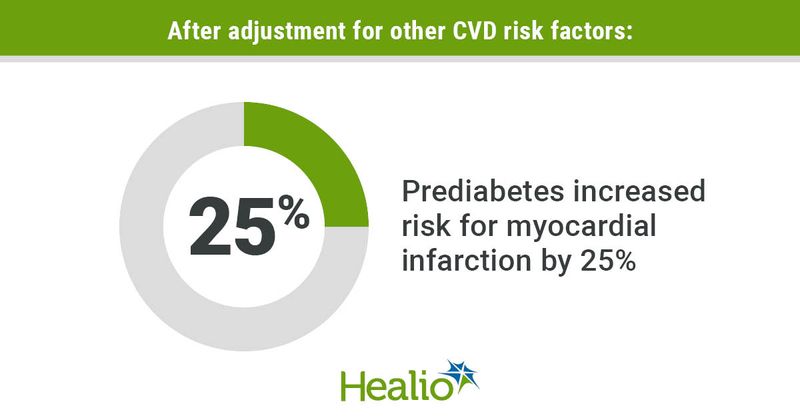Prediabetes raises odds of myocardial infarction, coronary procedures
ATLANTA — Prediabetes, with HbA1c below the diagnostic level for type 2 diabetes, may be an independent risk factor for myocardial infarction, percutaneous coronary intervention and coronary artery bypass grafting, according to study data.
“With our study results we’d like to reinforce the wake-up call for physicians and patients to shift the focus to prevent prediabetes and not just diabetes,” Geethika Thota, MBBS, a resident in the department of internal medicine at Saint Peter’s University Hospital/Rutgers Robert Wood Johnson University Hospital in New Jersey, said during a press briefing. “Our findings would also reinforce the importance of early recognition through screening and early intervention to aggressively manage the cardiovascular risk factors to prevent myocardial infarction.”

Thota and colleagues analyzed data from the National Inpatient Sample, collected from 2016 to 2018, on 1,794,149 adults admitted to U.S. teaching hospitals with a primary or secondary diagnosis of MI. Among the cohort, 1% had prediabetes, defined as an HbA1c between 5.7% and 6.4%.
Overall, patients with prediabetes had increased odds of MI compared with patients with normal HbA1c levels (OR = 1.41; 95% CI, 1.35-1.47; P < .001). Odds remained increased even after adjustments for other CV risk factors, including family history of MI, dyslipidemia, hypertension, diabetes, smoking and obesity: 25% higher for MI (OR = 1.25; 95% CI, 1.2-1.31; P < .001), 45% higher for percutaneous coronary intervention (OR = 1.45; 95% CI, 1.37-1.53; P < .001) and nearly double for coronary artery bypass grafting (OR = 1.95; 95% CI, 1.77-2.16; P < .001).
The researchers recommend early recognition of prediabetes through increased routine screening and early intervention.
“With this I’d like to emphasize that prediabetes is real,” Thota said. “Don’t let the ‘pre’ fool anyone. This is a call to action.”

